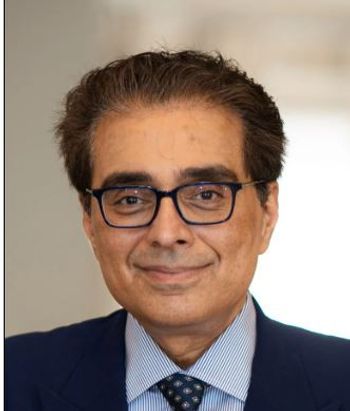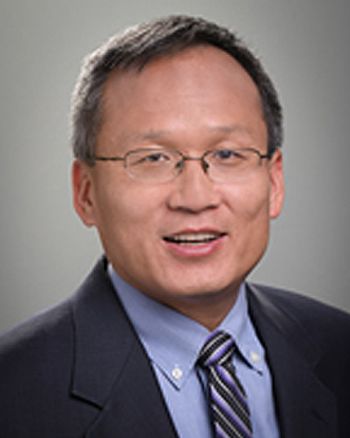
Sharp Rise in Young Patients Treated With Antipsychotics
NEW YORK ? The number of children and adolescents being treated with second-generation antipsychotics, not approved for pediatric patients, has increased steadily in almost a decade, according to national data.
NEW YORK, June 6 Children and adolescents treated with second-generation antipsychotic drugs in office-based practice have increased steadily in almost a decade, according to national data.
•Explain to interested parents that the second-generation antipsychotics described in this study are not FDA-approved for children and adolescents.
•Recognize that the long-term metabolic safety of these drugs for younger patients is unknown.
Yet these second-generation antipsychotics, which had a sixfold rise in their pediatric use from 1993 to 2002, are not FDA-approved for these young patients, Mark Olfson, M.D., of Columbia University here, and colleagues, reported in the Archives of General Psychiatry. They found the long-term safety of these agents a cause for concern.
Among the second-generation drugs were Clozaril (clozapine), Risperdal (risperidone), Zyprexa (olanzapine), and Seroquel (quetiapine fumarate). Older antipsychotics, which have FDA pediatric approval, include drugs such as Haldol (haloperidol) and Mellaril (thioridazine), the researchers wrote.
The data came from the National Ambulatory Medical Care Surveys (1993 to 2002) on outpatient visits by patients ages 20 or younger. Analysis showed a sixfold increase in visits that included an antipsychotic drug prescription, overwhelmingly second generation, rising from approximately 201,000 between 1993 and 1995 to 1,224,000 in 2002, said Dr. Olfson.
In the U.S., the annual number of such visits for every 100,000 patients younger than age 21 increased significantly from 274.7 in 1993 to 1995 to 1,438.4 in 2002, the researchers reported.
From 2000 to 2002, the number of visits per 100,000 was significantly higher for male than for female youths (1,913 versus 739); and for white non-Hispanic youths (1,515) than for youths of other ethnic or racial groups (426 visits).
Overall, 9.2% of mental health visits and 18.3% of visits to psychiatrists included antipsychotic drug treatment, the researchers reported. Mental-health visits that included a drug prescription were more likely to have to been provided by a psychiatrist and to have included a prescription for a mood stabilizer, they said.
Diagnoses for these patients included disruptive behavior disorders (37.8%), mood disorders (31.8%), pervasive developmental disorders or mental retardation (17.4%) and psychotic disorders (14.2%). The last two estimates, the researchers said, are unreliable as they are based on fewer than 30 visits. However, at present, they noted, "there is a dearth of empirical evidence to support these prescribing patterns."
Among the study's limitations, the researchers mentioned the fact that diagnosis depended on an individual physician; the lack of information concerning dosage and duration of drug treatment; missing data such as physician non-response; and that the sample included only office-based visits.
Discussing the possible reasons for the increase in antipsychotic drug treatment in young people, Dr. Olfson suggested that the growth is likely to have responded to the availability of the new antipsychotic medications with fewer short-term adverse effects in adults.
Furthermore, he said, because of declining access to and duration of in-patient treatment for children and adolescents, physicians have been treating a more severely ill group as outpatients, which in turn increased the use of these medications. In office-based practice, almost all of the antipsychotic treatment among children and adolescents is provided by psychiatrists.
However, the researchers said, the increased use of these drugs, has brought concern about the health risks-weight gain, hyperlipidemia, and diabetes-for these younger patients. Adverse metabolic effects, they said, may be more severe in children and adolescents than in adults.
"Carefully controlled research is needed to determine the clinical conditions for which second-generation antipsychotic medications are safe and effective," Dr. Olfson's team wrote. "In light of the widespread and growing use of these medications, there is a pressing need to increase and extend the experimental evaluation of these medications in children and adolescents."
This study was supported by grants from the National Institutes of Health and by an Alicia Koplowitz Foundation Fellowship in Child and Adolescent Psychiatry. Dr. Olfson disclosed that he has received grants from Eli Lilly and Bristol-Myers Squibb and has served as a consultant to the above firms and to Pfizer and McNeil Pharmaceuticals.
Newsletter
Enhance your clinical practice with the Patient Care newsletter, offering the latest evidence-based guidelines, diagnostic insights, and treatment strategies for primary care physicians.































































































































































































































































































